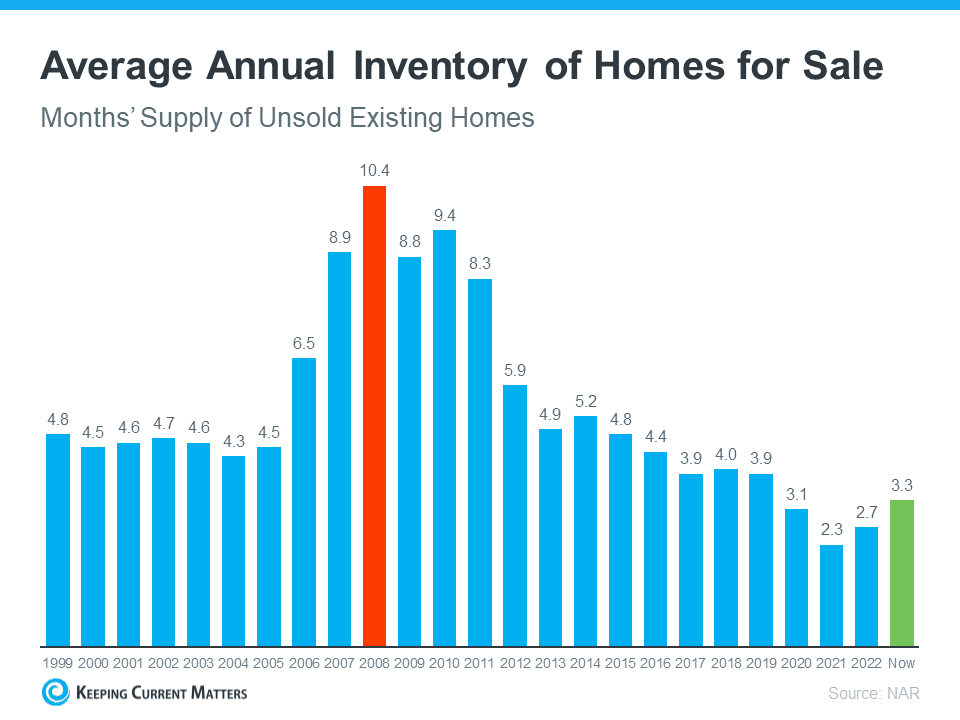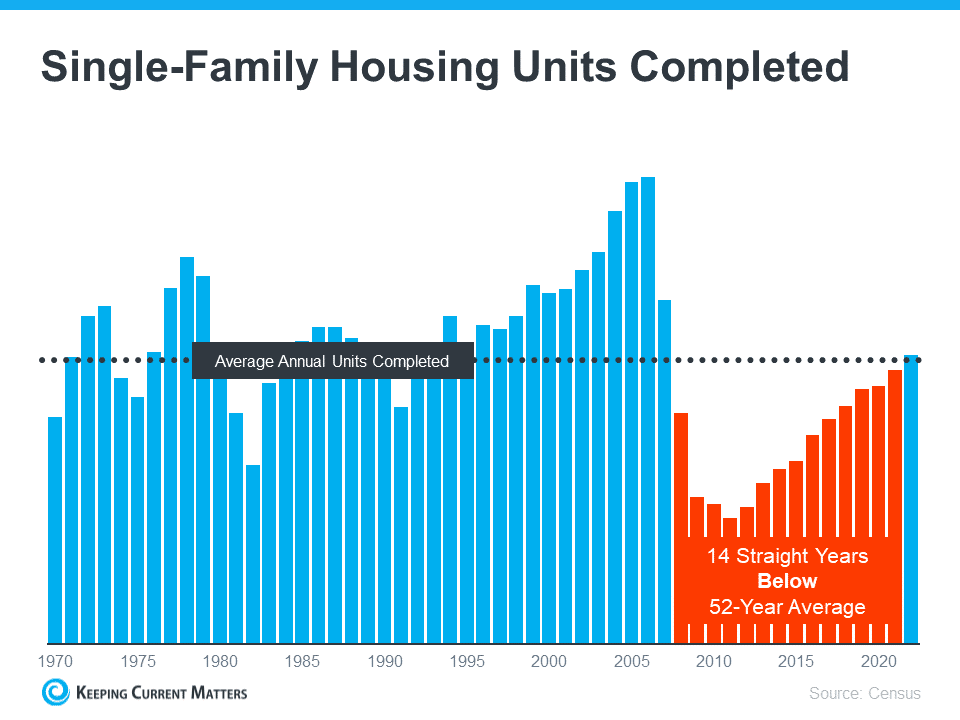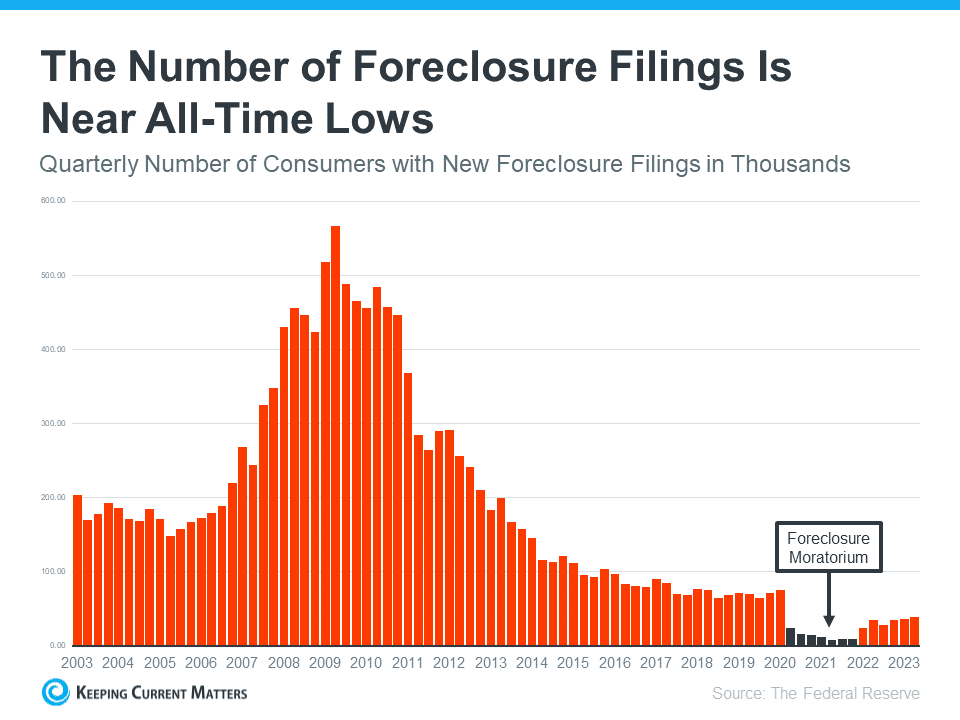You may remember the housing crisis of 2008, even if you didn't own a house at the time. If you're worried about the possibility of a repeat of what happened back then, there's good news - the real estate market is different now than it was in 2008. This means that there is a lack of supply, not an excess of supply like last time. For the market to crash, there would have to be too many houses for sale, but the data doesn't show that. The supply of housing comes from three main sources:
- Homeowners decide to sell their houses.
- Newly built houses.
- Properties in difficulty (foreclosures or short sales)
Although the supply of housing has increased compared to last year, it is still low. The supply in the current months is below normal. The graph below shows this more clearly. If you look at the most recent data (shown in green), compared to 2008 (shown in red), there is only about a third of that stock available today.

So what does that mean? There simply aren't enough houses available to make house prices fall. For 2008 to happen again, there would have to be a lot more people selling their homes with very few buyers, and that's not happening at the moment.
Newly-built homes
People are also talking a lot about what's happening with newly-built homes these days, and that might make you wonder if the builders are exaggerating. The graph below shows the number of new homes built over the last 52 years:

The 14 years of construction (shown in red) is a big part of the reason why the stock is so low today. Basically, builders haven't built enough homes for years and this has created a significant shortfall in supply.
Although the final blue bar on the chart shows that this is increasing and on its way to reaching the long-term average again, this won't suddenly create an oversupply. That's because there's too much of a gap to make up. In addition, builders are being intentional about not overbuilding houses as they did during the bubble.
Properties in difficulty (foreclosures and short sales).
The last place that inventory can come from is distressed properties, including short sales and foreclosures. During the housing crisis, there was a flood of foreclosures due to lending standards that allowed many people to get a home loan they couldn't actually afford.
Today, lending standards are much stricter, resulting in more qualified buyers and far fewer foreclosures. The graph below uses data from the Federal Reserve to show how things have changed since the housing crisis:

This graph illustrates that as lending standards have become stricter and buyers more qualified, the number of foreclosures has begun to decline. And in 2020 and 2021, the combination of a moratorium on foreclosures and the forbearance program helped prevent a repeat of the wave of foreclosures we saw around 2008.
The forbearance program has been a game changer, giving homeowners options for things like loan deferments and modifications that they didn't have before. And data on the success of this program shows that four out of five homeowners who come out of forbearance are paid in full or have worked out a repayment plan to avoid foreclosure. These are some of the main reasons why there won't be a wave of foreclosures hitting the market.
What this means for you:
Stock levels are nowhere near where they should be for prices to fall significantly and the real estate market to collapse. According to Bankrate, this isn't going to change any time soon, especially considering that buyer demand is still strong: "This continued lack of stock explains why many buyers still have no choice but to raise prices. It also indicates that the supply and demand equation simply won't allow prices to fall in the near future.
"Conclusion: The market doesn't have enough homes available for a repeat of the 2008 housing crisis - and there's nothing to suggest that's going to change anytime soon. That's why the real estate inventory tells us there's no downturn on the horizon.
To see the original post, click here:

